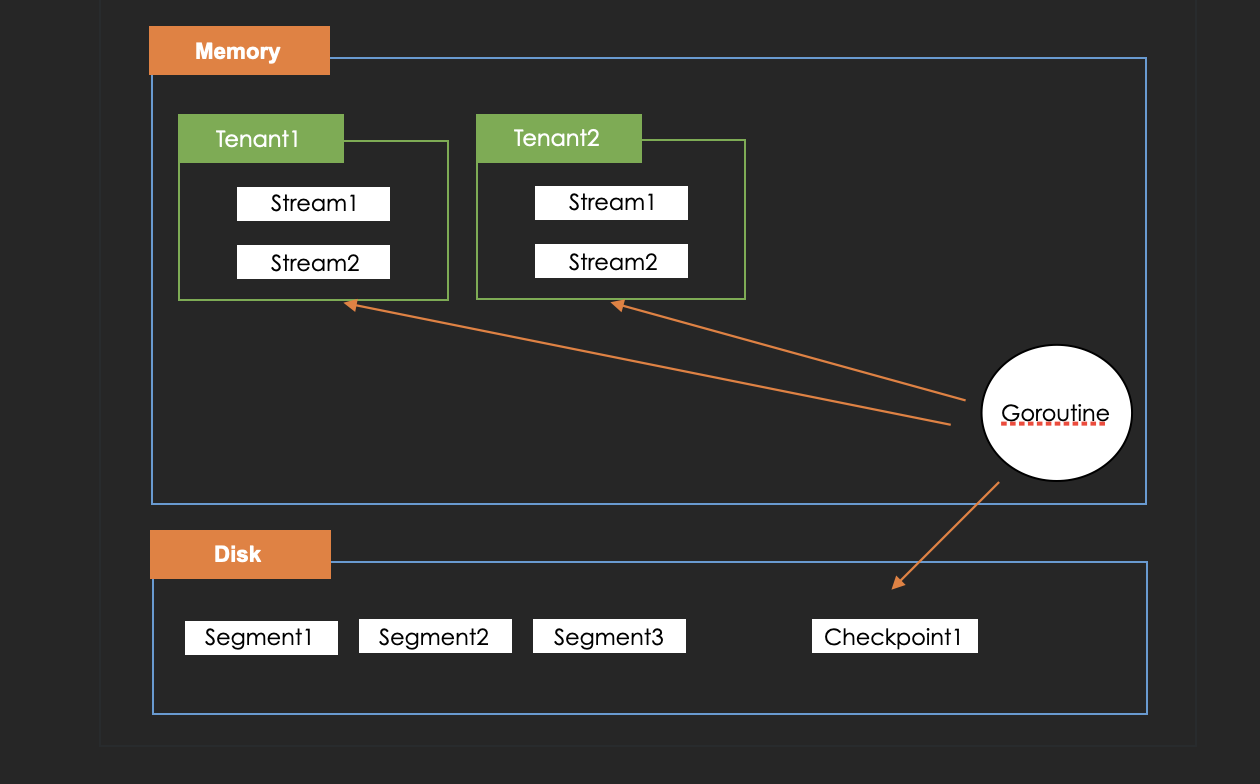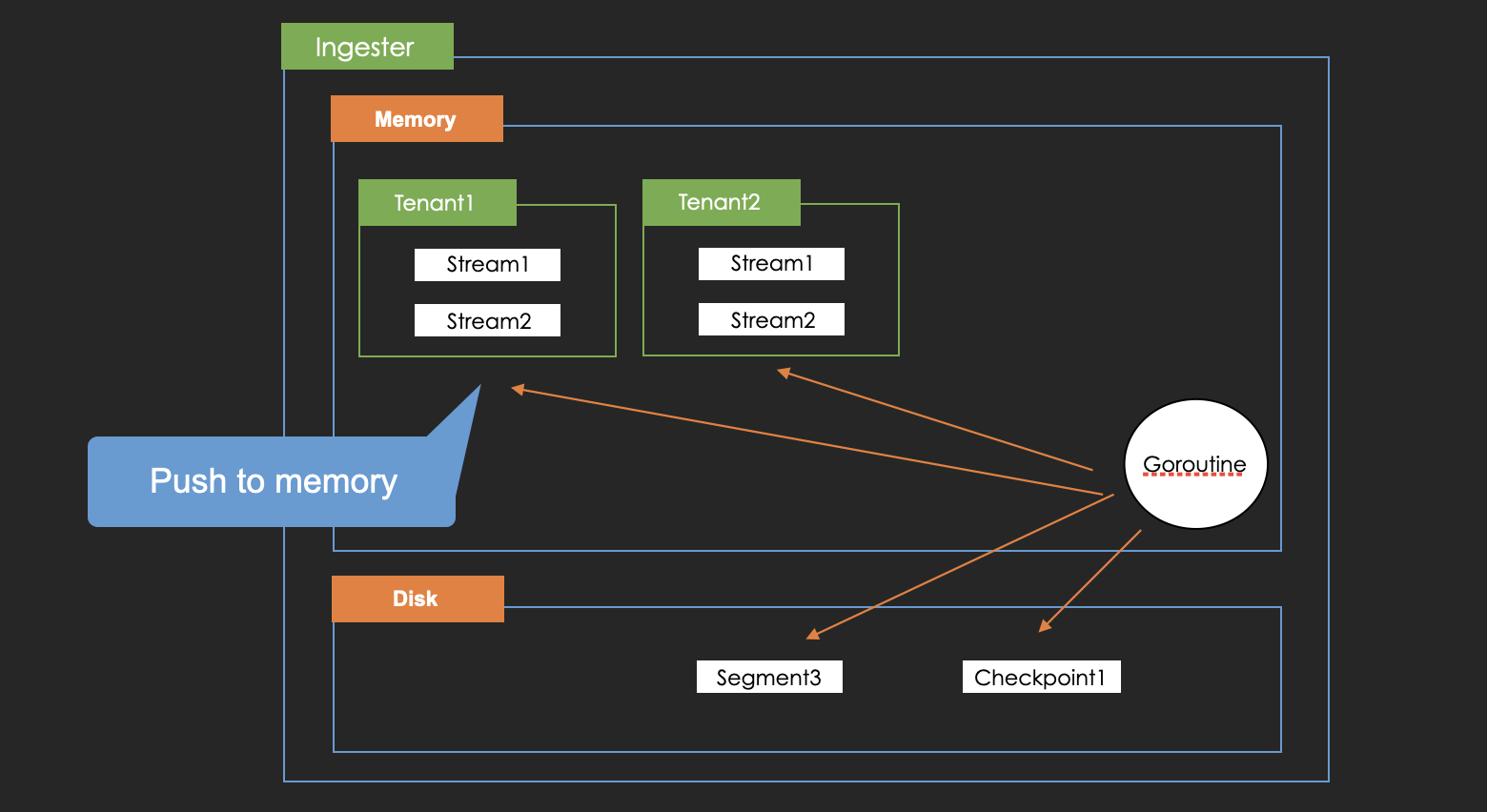Write-Ahead Log
Some people may be curious about what happens to the logs if an ingester dies before they are completely flushed. Write-Ahead log is a solution for such a situation.
Here is the summary of WAL.
Written in ingester's disk space when it receives post requests.
Not stop the ingestion flow, unlike typical WAL
Run recovery process when an ingester starts
Purge unused WAL files periodically
In addition, WAL has two important files, which are "segment" and "checkpoint".
Segment files
1. A "segment" file is created and WAL is appended to it, with raw data
2. A new segment file is created when its size reaches the limit
Checkpoints
WAL mechanism purges segment files periodically and there is a goroutine for that.
A checkpoint file is created when the process runs.
1. Force to advance to a new segment file to start purge process
So that the older segment file won't be written anymore and a deleting segment file won't be written.
2. A checkpoint file is created from all of the streams on memory.
It means that "checkpoint" is a snapshot of memory chunks at that time and it is compressed and encoded as well. (but "head" elements are not compressed either)
3. Purge unused files
It deletes the files without the newest segment and checkpoint.
That's how the snapshot of unflushed chunks on memory at that time remains.
How to recover from WAL
The recovery process is called in starting process of an ingester.
Before the ingester is ready, it loads the logs from segments and checkpoints and then pushes them to the memory chunks.
After that, they are managed as well as normal memory chunks.
In addition, if the recovery process is failed, the starting process will be failed as well.
That's how Loki recovers the unflushed logs from WAL.
Last updated





